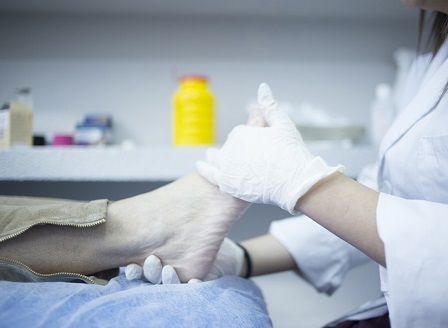Children’s bodies grow and change so much in the first years of life that it can be hard to know what is normal, and what is not – which is why we get many parents calling or asking about podiatry for kids.
From flat feet to pigeon toes, ingrown toenails and making sure shoes fit correctly, our Redlands podiatrists are trained professionals in matters relating to the feet, toes, and lower limbs for every member of the family.

While there are many reasons a parent might seek out podiatry help for their child, some of the more common concerns are listed below.
Lower Limb Development
The good news is that often what might seem abnormal compared to adult feet, is quite common in children.
Things like pigeon toe (in toeing), duck feet (feet that turn out), bowed legs, knock knees, flat feet, even walking only on their tip toes, can be normal in young children, and in most cases will resolve on their own by the time a child reaches school age.
However if you notice that your child has developed an unusual gait, for example limping or favouring one side; or that they seem to trip or fall a lot more than their peers, taking your child to a podiatrist for an assessment is a good idea.
Uneven shoe wear can also be a sign that there is a problem with your child’s biomechanics (ie the way that they are walking and moving), which could potentially cause extra strain on muscles, ligaments and joints, or even increase the risk of injury.
Pain, Injury and Infection
Carrying the full weight of our body is no easy feat for our feet, no matter what age we may be!
Your child may complain of pain from an easily identifiable cause such as a plantar wart or an ingrown toenail, both of which could benefit from a visit to your local podiatrist for treatment so your child is running around again in no time.
However sometimes it may seem that there is no apparent reason for your child to be experiencing leg or foot pain.
A condition known as “Sever’s disease” may cause heel pain in one or both feet, and is most commonly seen in children between the ages of about eight and fourteen, particularly those who lead an active life. While this is one of those conditions that children do grow out of, in the meantime your local podiatrist is able to help with managing symptoms and reducing pain.
What about Growing Pains?
Some children suffer from growing pains, and even though we don’t fully understand the cause, the pain is very real.
Growing pains tend to occur in the muscles of the legs and get worse later in the day, even interrupting your child’s sleep – only to disappear in the morning. If your child is affected, try gently massaging the affected area, some over the counter pain relief, or a wheatie or hot water bottle to help with symptoms and soothing your child.
If however you notice that your child is experiencing pain during the day, is limping, or otherwise unwell, or their leg is sore to touch, further investigation is warranted as it could be a sign of an underlying virus, infection, or other problem requiring treatment.
How to Look after your Child’s Feet
While the usual foot care tips apply, there are a couple of extra things to be aware of when it comes to looking after your child’s feet:
- There is no need for shoes (except for warmth) in babies that are not yet walking.
- Your child’s feet can grow up to 17 sizes in the first dozen years of their life, so make sure that they are not restricted by booties, socks, or shoes that are too tight or rigid.
- Such rapid growth can make it tempting to buy your children shoes with plenty of “growing room” – however don’t go overboard, as poorly fitting shoes can increase the risk of injury such as a sprained ankle or foot fractures.
If you are looking for a Redlands podiatrist with experience in podiatry for kids, at Trevor Lane Podiatry we are here to help. You can call us today on 3207 4736 or make a booking online 24/7.











